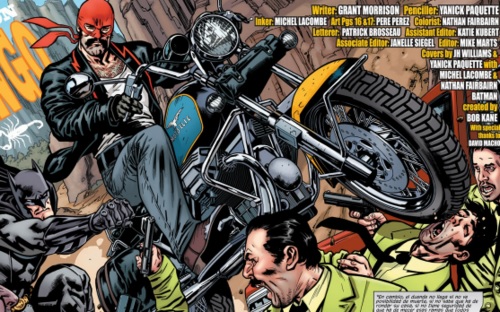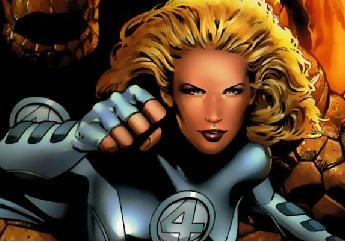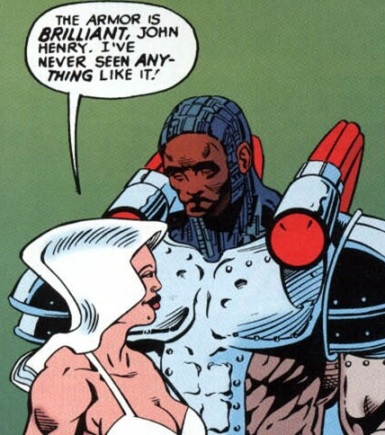Comic book fanatics are a special kind of nerd, a breed that’s both ravenous and fanatical. As have so many American boys across generations, I inhale my comics by the dozen; jumping from story to story quicker than your friendly neighborhood Spider-Man loses loved ones. I’m a superfan; one of those anti-life zombies totally enthralled by all things caped or crusader. I’m a loyal slave to two masters: Marvel and DC. More importantly, I’m a prime example of exactly the demographic these companies have pandered to since your grandparents were kids. I’m a young, white, middle-class, American man, one of the genre’s chosen ones, and I can’t ignore the ridiculous prejudice and exclusivity that hides so frequently in the pages of my literary drug of choice.
Sometimes laughable, sometimes genuinely offensive, comic book representations of people who aren’t testicle-wielding Anglo Americans are often downright problematic. Comics have carried this prejudice with them since the genre first dragged itself out of the bubbling viscera to emerge in the white washed golden age of Superman’s 1939 debut- A time when nary a brown face could be found on the page. And, despite some progress, it still hides between the lines today. While the causes of the problem are multiple, complex, and (unfortunately) the stuff of an entirely different article, its more light-hearted results are here for all to see and appreciate.
So, without further ado, here are three of the most laughably offensive and awkward (but not hateful) characters in mainstream pulp; champions of truth, justice, and the white-male-American way.
El Gaucho

Batman Incorporated #3
During my meditation on offensive superheroes, El Gaucho was probably the first that came to mind. This bandanna aficionado is a hot-headed Argentinian hero and a frequent cohort of Batman’s. As one of the Dark Knight’s most trusted Allies, you’d think he’d be a pretty solid character -and in some ways he’s actually kind of cool- but he looks like he should star in the crossover sequel to “Easy Rider” and Cheech and Chong’s “Up In Smoke”. Of all the members of Batman’s global boy’s club of heroes as seen in comics like “Batman Inc.”, this failed attempt to inject diversity into the genre is the one most likely to make you do a double take while reading. El Gaucho makes you wonder if any of the writers have ever actually met a Latino person, or if they’re just guessing that they all ride motorcycles and have ‘that’ kind of mustache.
The Invisible Woman

Ultimate Fantastic Four #21
Within the skin-tight bodysuit of Sue Storm, The invisible Woman of the Fantastic Four, exists a potentially even more shocking example of super-prejudice. A much more popular character than the “Machete” stunt double above, Sue’s practically a house-hold name. But her popularity never bought her much respect. In her appearances in FF comics from earlier, less equitable decades she set the precedent (and a pretty high bar) for sexism in the world of superheroes- that’s saying something in an industry in which a good two thirds of the female characters fight in heels, and 99% of them look like Hollywood sex symbols were gene spliced with Barbie dolls- only sexier and more unrealistic. Even here, Sue Still takes the hegemonic cake. For one, this blonde bombshell is utterly defined by being a wife. Always submissive and supportive of her much more important (and much, much smarter) husband, she’s basically treated like she’s actually always invisible. Not only does she shut up when Reed tells her to, she was often left behind when the men went on dangerous missions so she could keep vigil over the frikken domestic sphere- really, she’d stay home, watch the kids, eat some Valium, dust the teleporter, that kind of thing. After all, a super-powered science fight against alien nano-people (or wherever the fucking FF go on any given mission) is no place for a woman. I mean, unless you have, I don’t know, SUPERPOWERS or something. They excluded a woman from their dangerous adventures who can make things totally invisible. And, you know, no big deal, she could also make a nigh unbreakable force field or insta-kill a charging elephant with a twitch of her nose like she was a violently anti-environmental ‘I Dream of Genie”.
But in the early days she couldn’t even do that. Her only power was literally to turn invisible- she didn’t even get the force fields until years and years after her debut. Now, thank god, she gets a little bit of more than overdue recognition. In actuality, she’s really fucking bad-ass. She can create a force field in your heart, brain, or the head of your misogynist dick just by thinking it, and she’s generally accepted as the most dangerous member of the otherwise male team. Still, she was (and probably still is) most widely recognized not as ‘that cool superhero chick’, but as ‘Reed Richards’ boring wife”.
Oh, also, ‘The Invisible Woman’ sounds like the title of a Margaret Atwood book.
Steel

Steel Annual 2
Although he may be a more mildly offensive example than these first two face-palm inspiring heroes, one last crime fighter has to be mentioned -and I don’t think I should have to elaborate too much on why. John Henry Irons, ‘Steel’, was a tech genius possessing, battle-suit wearing, hammer swinging, bad mamma-jamma; and if you can’t guess his race by his name, you should stop reading now. He was supposed to be the Black cross between Black-Superman and Black-Tony Stark and we the public were supposed to fucking eat him up. DC thought everybody was going to be all “Finally a strong, positive black role model who isn’t a sidekick or something stupid like that! Look he’s a main character in a major Superman Comic!” Instead, predictably, everybody was like “Uh, wait, what was his name again?’. Not quite the sensation DC had in mind, Irons wore overalls in his downtime, and basically made people who read “The Death of Superman” uncomfortable more than making them proud of how far we’ve come as a nation on the issue of Black people wearing capes.
Actually, he really was a good role model: born in the rural south and raised in the ghettos of DC, he studied his way out of poverty, into a college engineering program, and then a big government contract. He became a wealthy scientist, and then a hero who ends up saving Superman’s famous white ass. Still… I mean, his name was actually John Henry Irons for chrissake. He played second fiddle to Kal El, carried a big iron hammer when he could have designed something much more high-tech, and he was frequently proselytizing -spouting lines about how bad things are in the projects. The writers could not have seemed any more painfully aware of this hero’s race; he wasn’t just a cool superhero like he could have been. He was the Black superhero, with a super-capital B. At least once he was referred to as a ‘steel drivin man’, and to top it off he was undone by the seduction of a (gasp!) older white woman.
I don’t know if that last part was actually all that racist, but it does remind me of “Pootie-Tang”, so there.
Peter Johnsen is a self-styled expert on just about everything with concentrations in comic books, mythology, and role-playing. A recent college graduate, Peter aspires to one day have adamantium bones.